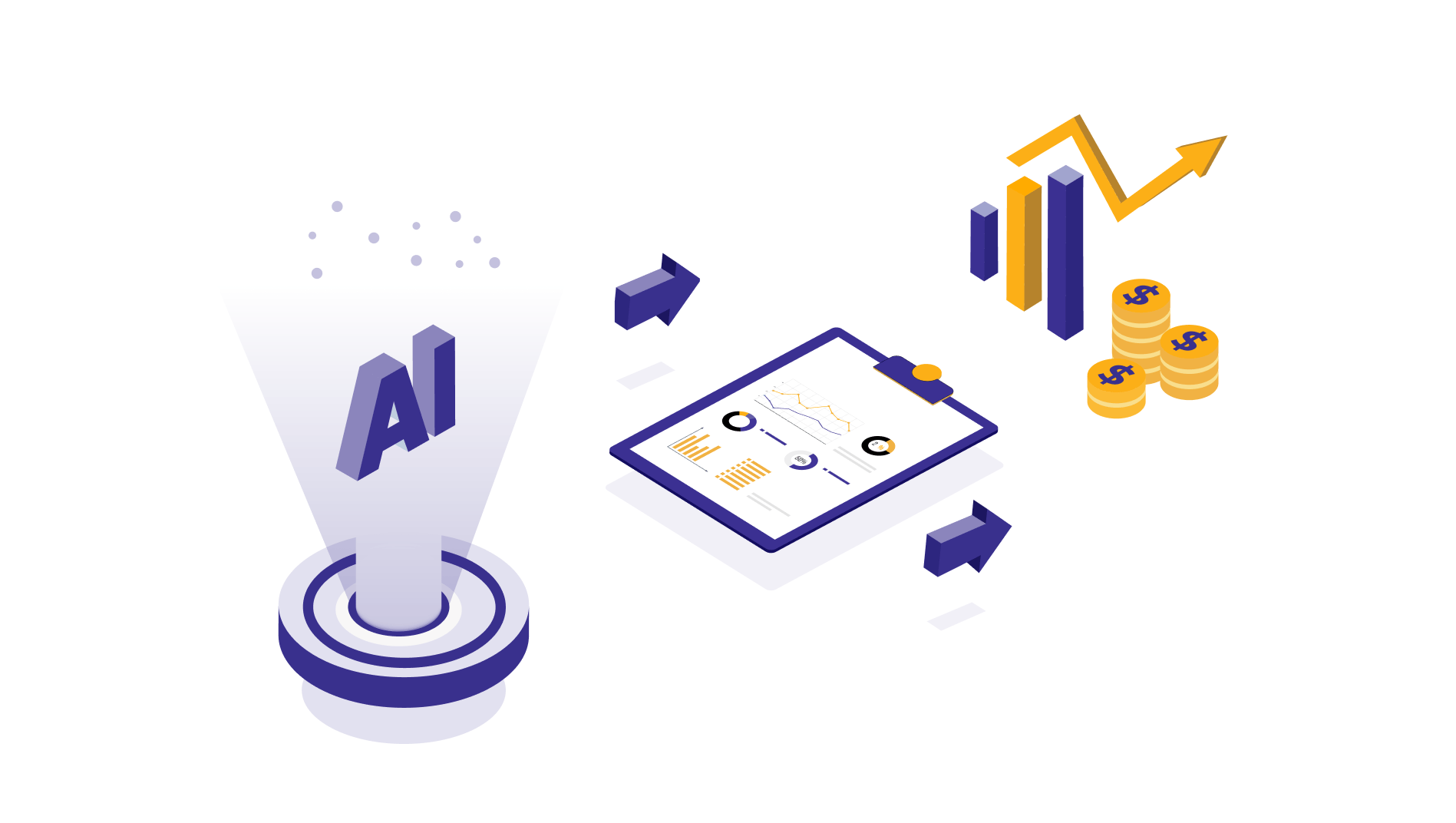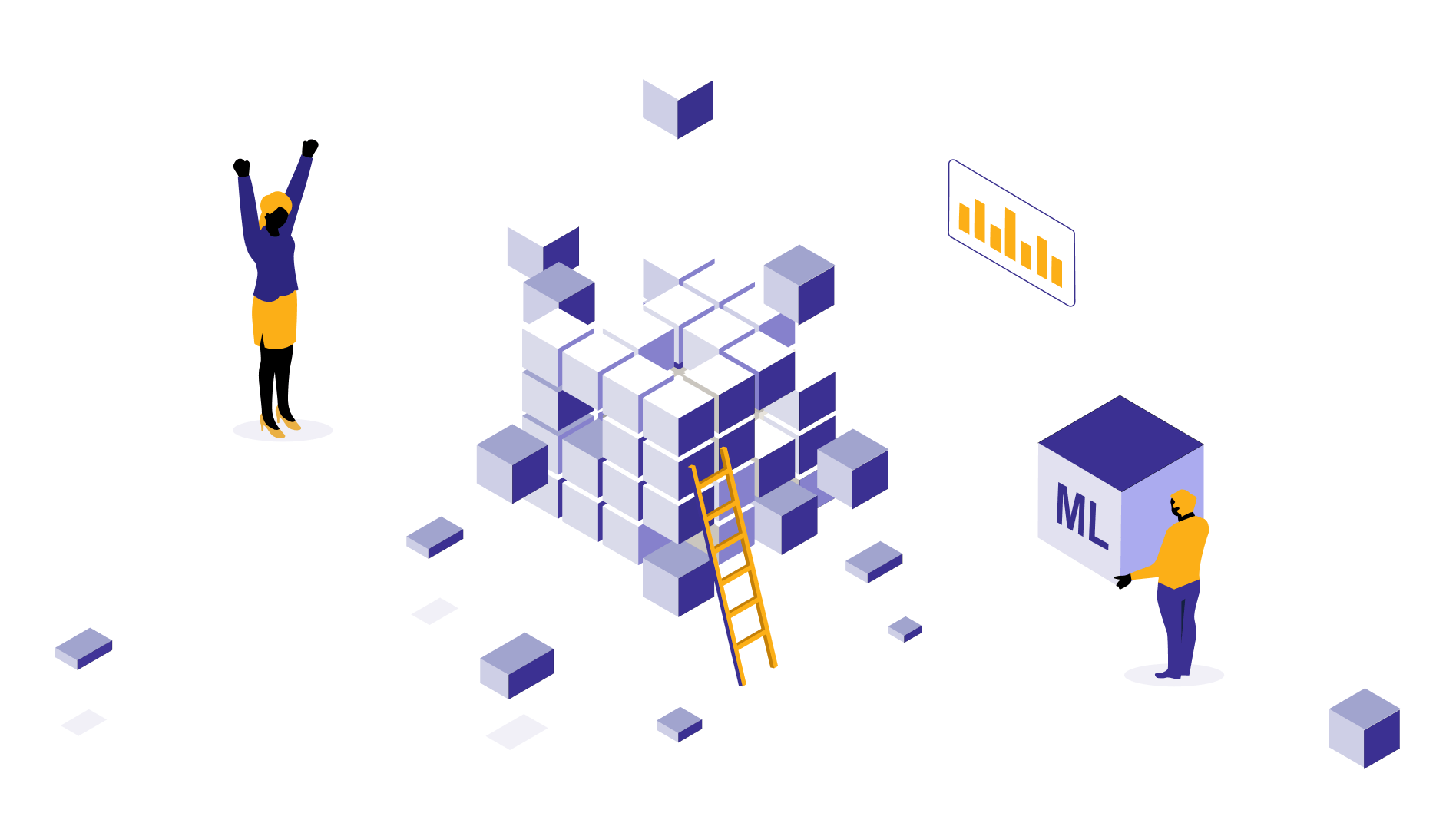Does my business need data analytics services?
How do organizations use data analytics to make the right decisions? How can you make use of your vast data resources to boost revenue and gain a competitive advantage? The article has answers to all your questions about benefits of data analytics in the business world.

Jagadeesan
June 30, 2024 |
6 mins

Every business has data—it can be sales details, customer research, feedback, or any transactional or behavioral data that has potential wealth within. There are high chances that your data could answer the most burning questions your decision-makers have—your next product improvement, future demands and inventory needs, or cost reduction measures, and more like this. Some answers might help you overcome everyday bottlenecks and some could help you improve revenue and growth drastically.
In a nutshell, every business requires data analytics to bring to light insights you wouldn’t have a clue about. And data analytics isn’t only for the c-suite audience. The advantages of self service analytics is that it can help people from any functional area, handling any workload.
For example, a marketer could use data analytics to find out the most effective channels to focus on what brings the highest ROI.
But data analytics is rather a useful investment to do in the early stage to find out the right direction among possible options, through quick consultations with business intelligence companies.
What is data analytics?
Data analytics means transforming large amounts of business data into useful and actionable insights to propel the right decisions. There are different steps and tools involved in this process that help you analyze your data and uncover those hidden patterns. Businesses use data analytics mainly to make day-to-day decisions and fuel strategic planning across different departments.
Data analytics comes with four key components.
Data collection - Integrating data from multiple sources of your business - like transactional data, databases, xml files, spreadsheets, etc.
Data cleaning - The obtained data must be cleaned and standardized to remove inconsistencies and errors.
Data transformation - Any transformation that you need to perform to make the data analysis ready. Examples: Normalization, filtering, aggregation, etc.
Analysis and visualization - Applying statistical, math, or machine learning algorithms to extract and interpret the hidden message. Visualization to make it much simpler with the help of graphs and visual aids.
Who needs data analytics?
We have already seen how data analytics is crucial for every business role. Starting from the top, the most important consumers of data analytics are executives and c-suite management roles. Examples: CEOs, CFOs, COOs, etc.. These roles require data analytics to understand their overall business performance, financial health, and operational efficiency. With the help of reports and visualization tools, they could spot weak areas and devise strategic measures to fix them.
Likewise, marketing and sales roles could use data analytics to segment customers, target the right group, and plan sales and marketing campaigns.
Finance department - The finance team needs it the most as they deal with data the most. Be it expenses, budget planning, or cost cutting activities. They could also forecast the future revenue to create an accurate budgeting plan.
Operations - Supply chain, operations, and logistics also benefit from data analytics by optimizing manufacturing, storage, and transportation. Imagine how easy it would be for a warehouse manager to keep the inventory at ideal levels when they can track the demand ahead.
Product - design and product team often grapple with too much user feedback data. Data analytics help the product development team, guiding them throughout the journey.
Human resources - The people’s team require data analytics to manage productivity of employees better and plan their hiring activities. Data analytics could also help the human resources department find the potential candidates and increase employee turnover.
Customer service - This could help the support team track all their requests, find the frequently asked questions, streamline their workloads, and enhance customer satisfaction.
Which industry uses data analytics the most?
Data analytics is commonly used across every industry. But, certain businesses, due to their nature of operations, use them the most. Some of them are listed below.
Retail and eCommerce
Serving customers’ requirements on demand, these two sectors must rely on numbers to see big profits. From planning inventory management to offering personalized discounts to segmenting customers based on behaviors, too many data analytics happen behind the scenes.
Even McKinsey suggests that the retailers who use data analytics could see a 15 to 20% increase in ROI from their marketing campaigns. One good example would be curated marketing ads you receive on products you are likely to buy.
Logistics
Being heavily driven by numbers, logistics could greatly benefit from data analytics. They can plan their operations, reduce fuel costs, meet demands, and satisfy customers when they adopt data-driven operations.
While the industry still faces many challenges with data analytics, they still use data analytics a lot.
For example, 50% of logistics, carrier, and shipping companies track vehicles in real-time. This denotes that they use tracking data to understand their distances covered, fuel consumption, driver workloads, and other transportation expenses. That’s how data analytics help the logistics sector achieve better freight management and reduced logistics costs.
One of our prominent logistics customers became data-driven and enjoyed a cost savings of 12 to 15%.
Recommended read: Enhancing business intelligence for a logistics company
Media and entertainment
Mainstream media and entertainment channels have evolved a lot. From delivering personalized content to using AI use cases, most companies have gone all out to keep their audiences hooked. That being said, media stands to be one of the industries that uses AI a lot. Most streaming platforms collect audience watch data and preferences to curate their recommendations. McKinsey suggests that this increases the viewer activity up to 75% for platforms like Netflix. These companies also utilize data analytics to reduce customer churn and improve overall experience.
Learn more: How AI used in media industry
Manufacturing
For a long time, manufacturers have been using data to track goods they manufacture, store, and sell. Over years, their data adoption has improved and now they use data analytics for predictive analytics, QC, demand forecasting, and more. A good number of manufacturing plants use real-time data analytics to align their demand with operations and inventory. This way, they manufacture just what’s needed for the day, saving wastage and electricity costs while maximizing profits.
In a recent survey by Deloitte, 85% of manufacturers have agreed that data analytics is crucial for their future operations.
Types of data analytics
1 - Descriptive analytics: Exploring and understanding a past event with the help of historical data. Example: A sales team going through past years’ sales reports, looking for sales trends of different products.
2 - Diagnostic analytics: To understand the why behind what happened in the past. Example: The same sales team trying to uncover the sudden drop in a particular product during the month of July and August.
3 - Predictive analytics: With the help of the historical data, predicting what’s likely to happen in the future. A stock selling company trying to project stock prices in the near future based on current pricing trends and possible future events.
4 - Prescriptive analytics: Sharing recommended actions to do to achieve the desired outcome. Think of a dynamic pricing strategy a grocery retail store follows. Based on predicted future sales, they sell a product at sale or increase the price a bit, identifying the best price using prescriptive analytics.
Recommended read: What do you understand by data processing?
Benefits of data analytics for businesses
The following points explain data analytics' importance in the business world.
Make informed decisions
It’s sad that 58%.) of companies still make gut-based decisions even when they have abundant data lying around. This is not to say that you can’t trust your instincts. While a decision-maker usually sees what’s coming, backing them up with data analytics could give you confidence. On top of that, it becomes much simpler to discuss data points with others and get their opinions.
Given that you have to consider way too many factors to conclude on something, data analytics makes it simple, presenting what you need on a platter. It becomes a useful tool, offering you the right point of view, which typically is blindsided.
Incorporate personalization
Getting the attention of customers in the digital world is never an easy task. Customers are smart and expect more personal touch in both B2B and B2C realms. To cut through the clutter and appeal better, you need to know who you talk to and craft the message and offer based on it. With data analytics, you can do this successfully. You can segment customers, identify intricate behaviors and purchase habits, and curate offers that will interest them.
Many brands and businesses have nailed the personalization part and became their customers' go-to. Remember how people instantly think of Airbnb when they think of vacations? Something that clearly shows the role of data in understanding audiences and curating and creating authentic travel experiences.
Increase operational efficiency
Every business process comes with a set of challenges and bottlenecks. Some come with plain solutions and some don’t. Rather than trying to solve and create more issues, you could turn to data and find the way out. For example, a customer support team constantly faces labor-management issues. For starters, they could track the number of working hours, agents availability, productivity, call duration, etc. Later, they could project the numbers to identify their most and least busiest hours and derive efficiency of each employee, and align both to sort out the issue.
Win your competition
Your competitors are out there, doing and delivering their best. Market research and customer knowledge aren’t enough to outwit them and win your game. It takes data analytics to join the puzzle pieces together and identify market gaps and opportunities. Results? You could tap into a new segment of audience your competitors aren’t paying attention to. Or, you develop a better feature or a product your audiences need the most. You do the most right thing it takes to gain the competitive edge. That’s how successful businesses use data analytics to stay on top of their game, giving competitors a run for their money.
Recommended read: What is data partitioning?
Companies that use data analytics
Many companies have got their data game right and saw abundant growth. You could see some most-known ones with the rather lesser-known data stories below.
Netflix
The globally acclaimed OTT platform needs no introduction. Everyone knows the massive efforts Netflix puts to make your viewing experience pleasant and memorable. But behind all those personalized content, on-point recommendations, and compelling user interfaces lies loads of data processing, analytics, and AI interference. They follow a data-driven approach for everything - from promoting their shows to testing new layouts to identifying audience preferences. That’s how they nailed data analytics and created an unbeatable name in the entertainment market.
Amazon
Amazon isn’t just an eCommerce company anymore. They are almost in every sector and every corner, delivering above par services to users. They do it all - from personalizing offers to having a streamlined inventory and supply chain to solving customer issues on time. The foundational pillar of all of these is their data analytics. For example, they use predictive analytics to identify their future demands pertaining to each location, so they could stock the respective inventories and fulfillment centers.
Spotify
Spotify holds an unshakeable place in the music streaming realm. Even though people complain about how inconvenient its ads are, they still use the platform for its brilliant recommendations, user-friendly interface, intuitive weekly and daily mixes, and many other things.
They keep note of every move of listeners—frequencies, preferred genres, likes, skips, new additions and addictions, and a lot more like this. Their data exploration is what gets us curated playlist suggestions, new song alerts, weekly and daily playlists, and creative musical stories like Wrapped.
Learn more: Story of how Spotify creates Wrapped profiles and stories every year.
Conclusion
The importance of data analytics cannot be taken lightly in the era of digital transformation. Its requirement will continue to grow just as the amount of data increases, swooping in from all directions. If you like to discover clarity out of these rows and columns and derive useful and growth-driving insights, then data analytics is your starting point. It can work for your business even if your business doesn’t have a huge data mine right now. Talking to a data expert from one of the best data analytics companies can help you decide how you can make data analytics work for your business. Use the contact us button to book your free exclusive audit now.

by Jagadeesan
“datakulture’s co-founder, thought leader, and skilled team leader, Jagadeesan has worked with companies across industries and geographies. He knows how data problems hide in plain sight—whether in manufacturing floors, retail shelves, or financial dashboards—and how the right strategy can turn them into opportunities. With years of experience guiding teams and clients alike, he ensures data solutions don’t just look good on paper but deliver measurable business impact.



